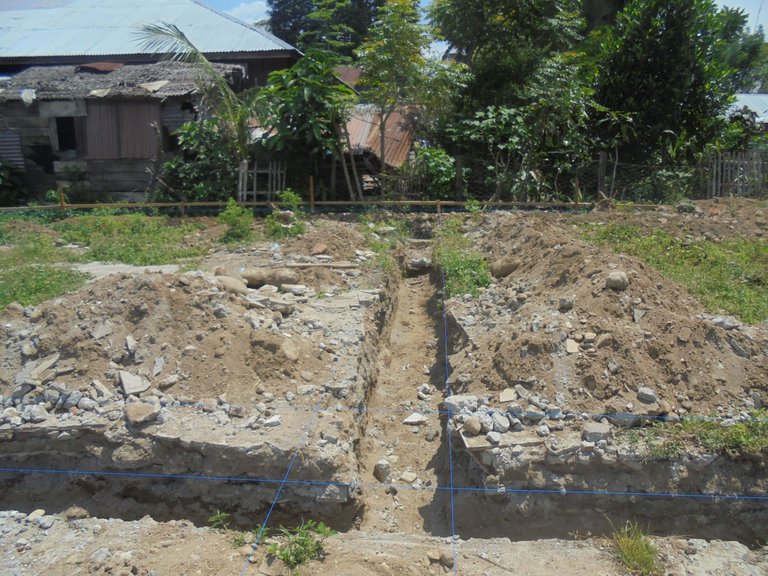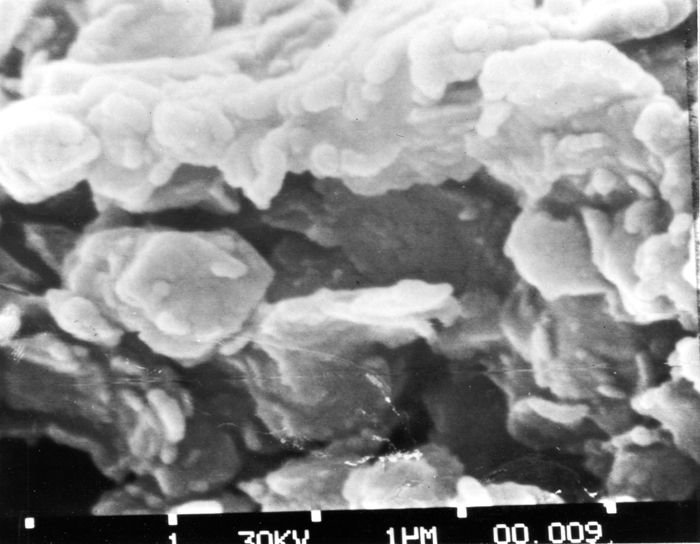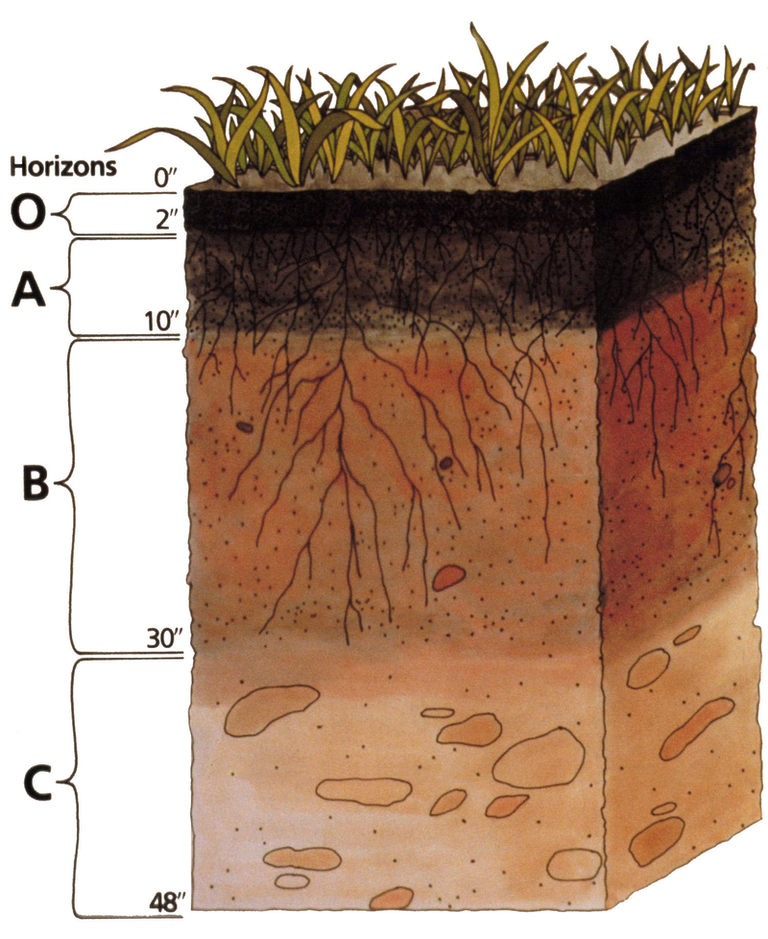
Groundwork for foundation, credit @kharrazi
But quality construction materials are certainly not the only ones that determine which building you build will have good strength and endurance.
In addition to good materials, you should also consider the labor of your building as well as some other needs such as equipment used and so forth.
But what if the ground/soil as a simple building load sustain you are unable to support the weight of your building and how you can know it practically?.
With you know the carrying capacity of the soil can determine the type of foundation, as well as proper or not the building is built on the area. [source]
You should know some things that will be considered before you plan your building.
The soil is part of the earth's crust, a soil is formed from aid of organisms to rotting a rocks.[source]
The soil plays an important role in every life whether it is flora or fauna because the soil provides nutrients and water as well as root raisers for plants, some microorganisms also make the land as a living habitat.[source]
Each soil varies and a color is constricted on each layer, it happens because of a chemical process. Soil color can indicate a content of the soil shaper, such as manganese, sulfur or the amount of organic matter.
Some experts think of ground/soil as water storage and suppress erosion even if the ground itself can be self-eradicated. [source]
The composition of soil. [source]
- Organic matter (5%)
- Clay (9%)
- Silt (18%)
- Sand (18%)
- Gas (25%)
- Water (25%)
While the clay contains silica or fine aluminum, the clay will form hard clumps when it dries and when exposed to water will be sticky. [source]
As a soil construction material is usually used as a backfill and so on especially on the groundwork but clay is very rarely used in construction work.

Electron microscope photograph of smectite clay image source
Typical soil types and can be easily recognized
Clay
In Sumatra, you can find this type of soil near the beach, paddy fields or aquaculture area, this type of soil can be easily recognized because.- Difficult to clean and sticky.
- Smelly and musty.
- Slow dry.
- When dry the soil will shrink.
- Easy to break when dry.
- Contains organic residues such as shellfish and others.
Sandy soil
In Aceh and Sumatra, this type of soil can usually be found on the beach and riverbanks, but you can experiment so that you know that this soil is your area type by pressing the Ø12mm iron rod to the ground and you can do it randomly. If it turns out you can press the iron rod more than 30 cm by hand then it can be concluded the ground is not good enough to hold your building load.
You should find another location to build, but if not possible you should use an excavator to dig and dispose of this type and replace your soil type with a better and qualified backfill.
Alternatively, you can build houses/buildings with wooden construction because buildings with wooden structures will be more flexible, if there is a slight decrease in the land/ground then the building using the wooden structure is not too problematic or you can easily fix it.
We recommend that you determine and know about the land that will withstand the burden of your building because if it turns out wrong to put the building on the ground that is not able to withstand the burden of the building it will hurt you.
A practical way to determine the strength of the ground is to use a Ø12mm iron rod that is pressed with the hands of the ground up to a certain depth.
Choosing land/ground that can withstand building load is highly recommended in construction work because the building will be more sturdy and safe to use.
This is the only thing I can write on this occasion, over all the mistakes and lack of unintentional writing as a servant of God, I apologize.
Thanks to friends who have visited this blog and provided constructive comments, as well as scientists who are willing to sacrifice their time for a better civilization.
source:
Do you love science? by respecting the work of others and not plagiarism then you are welcome to join steemSTEM by using @science tags, you can also chat with us in steemit chat/steemSTEM channel.

Best regards @kharrazi

comprehensive explanation, friend @kharrazi. you really master the field, and continue to be creative in accordance with your scientific qualifications
I'm just trying to give what I know, thank you for your stopping my brother :)
It's nice to see how your language improves over time my friend @kharrazi! :D
I am actually very grateful to you, for you have guided me through the world of darkness, my dear friend @ruth-girl
:P
Always happy to help those who want to help themselves! :)
The most important of structure. Hopeful Success for this project, being the expetation
thanks my friend :)
In every constraction before you start one, you must check the foundation first and its composition. And thats the soil. You can also based on the soil how high the structure is fitted.
yup, and that's the stage
Good day @kharrazi I appreciate all the info and hard work thank you :) Followed
Thanks for your appreciation and support my friend @lifernesec1973 :)
Congratulations @kharrazi! You have completed some achievement on Steemit and have been rewarded with new badge(s) :
Click on any badge to view your own Board of Honor on SteemitBoard.
For more information about SteemitBoard, click here
If you no longer want to receive notifications, reply to this comment with the word
STOPIts very nice to read good content on steemit from engineering field. Are an an Engineer?
yes I'm an engineer but more precisely I am an architect.
thanks for stopping
😁😁
Love your post about soil engineering
thank you @steemnepal
greeting from #aceh here :)
Greetings from Nepal.
We have the best soil here in Greece. !
I doubt, please make your test as I mentioned above on ground level, not on stone.
But ok, this time i believe you buddy :D
GOOD